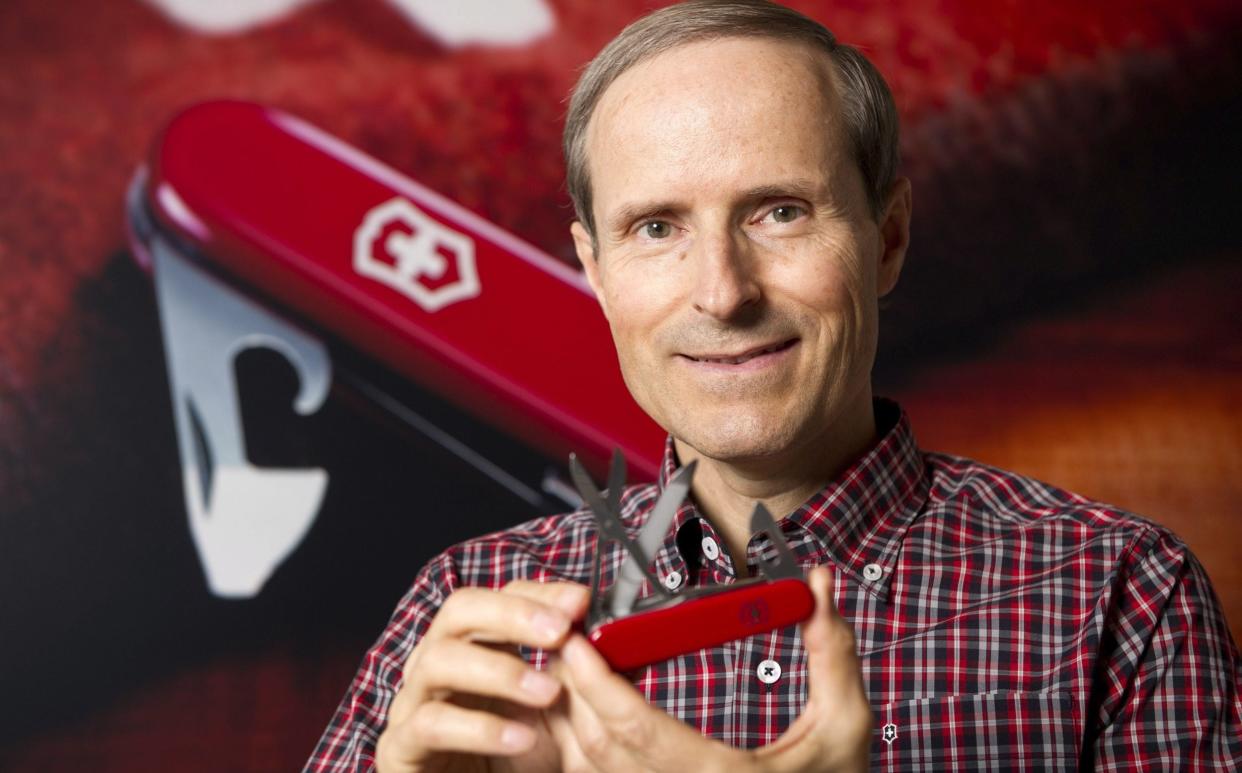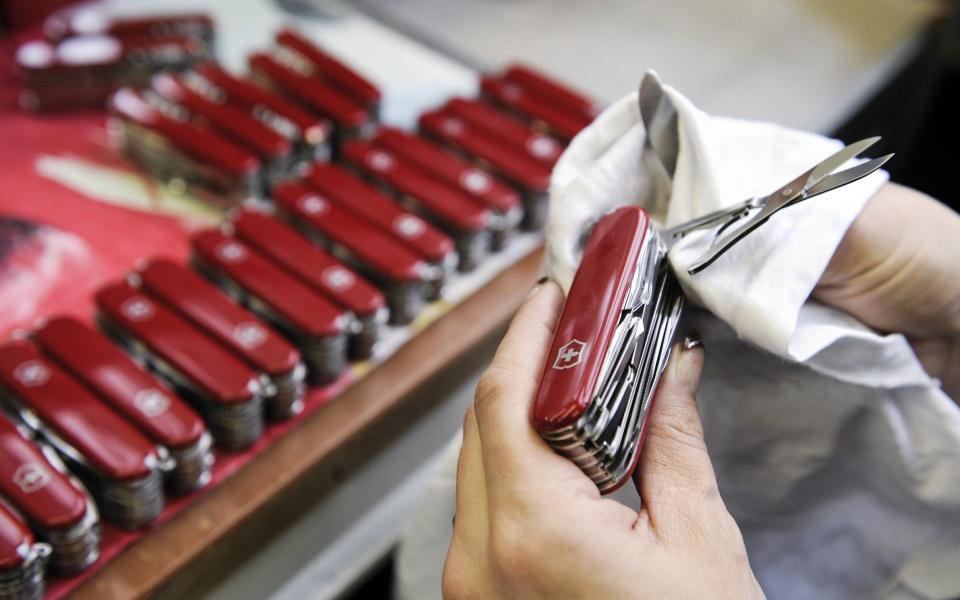New Swiss Army Knife being developed – without the knife

For more than a century it has been an indispensable piece of kit for campers, hikers and adventurers, but the Swiss Army Knife is about to be stripped of its most elemental part – the blade.
The decision has been taken by Victorinox, the Swiss firm that produces the iconic clasp knife, in response to tighter regulations governing the carrying of knives in many countries around the world.
The company instead plans to make folding tools that will not feature a blade but which they hope will still appeal to some customers – cyclists, for instance.
“We’re concerned about the increasing regulation of knives due to the violence in the world,” said Carl Elsener, the fourth-generation CEO of the family-run company.
“In some markets, the blade creates an image of a weapon. I have in mind creating a tool that would be useful for cyclists. Cyclists have a need for specific tools but not necessarily a blade,” he said. “We already have a tool specifically for golfers.”
The firm is in the early stages of product development and does not yet have a launch date for the new products.
Mr Elsener said in England and certain Asian countries “you are sometimes only allowed to carry a knife if it is needed to carry out a job or if you are in the outdoors”.
“Victorinox wants to counteract this trend with the development of blade-less tools for specific outdoor activities or sports,” he said.

Under UK law, a person can only carry a knife in public if it has a folding blade that is less than 3 inches (7.62cm) long.
For all other knives, it is illegal to carry them in public without a good reason. That can include needing the knife for work, wearing it as part of a national costume or for religious reasons, such as the curved kirpan knife carried by some Sikhs.
It is not the first time the company has had to adapt to changing circumstances.
In the aftermath of the 9/11 terrorist attacks on the US in 2001, the sales of Swiss Army Knives fell by more than 30 per cent almost overnight because of the ban on sharp objects introduced by airlines.
“September 11th showed us that we mustn’t depend on just one sector of products,” Mr Elsener said. Victorinox now produces watches, luggage and even fragrances in addition to its pocket knives.
Mr Elsener’s great-grandfather, a self-employed cutler, started the company when he landed a contract to supply knives to the Swiss army in 1891. Six years later he patented the original soldier’s knife and called it the Swiss Army Knife.
The company, based in the small town of Ibach in central Switzerland, produces around 10 million Swiss Army Knives a year. There are now around 400 types to choose from, including one that boasts 73 functions. They have even been carried into space by Nasa astronauts.
Until now, however, they have all featured at least one blade.
Even in Switzerland, the home of the brand, there has been discussion about what people are permitted to carry.
In 2016, there was a parliamentary debate about banning blades longer than five centimetres (two inches).
One affronted MP asked: “Will the famous Swiss Army Knife be forbidden?” The proposed amendment was dropped.

 Yahoo News
Yahoo News 
